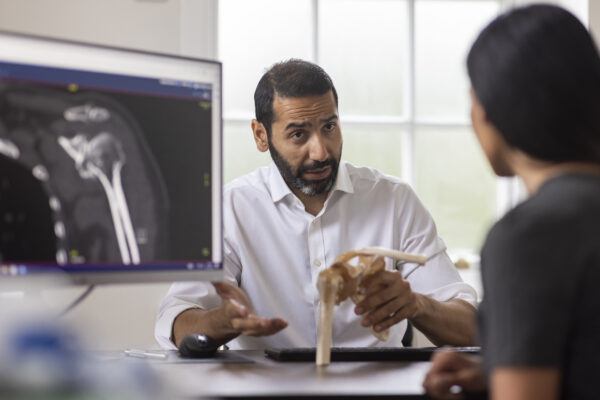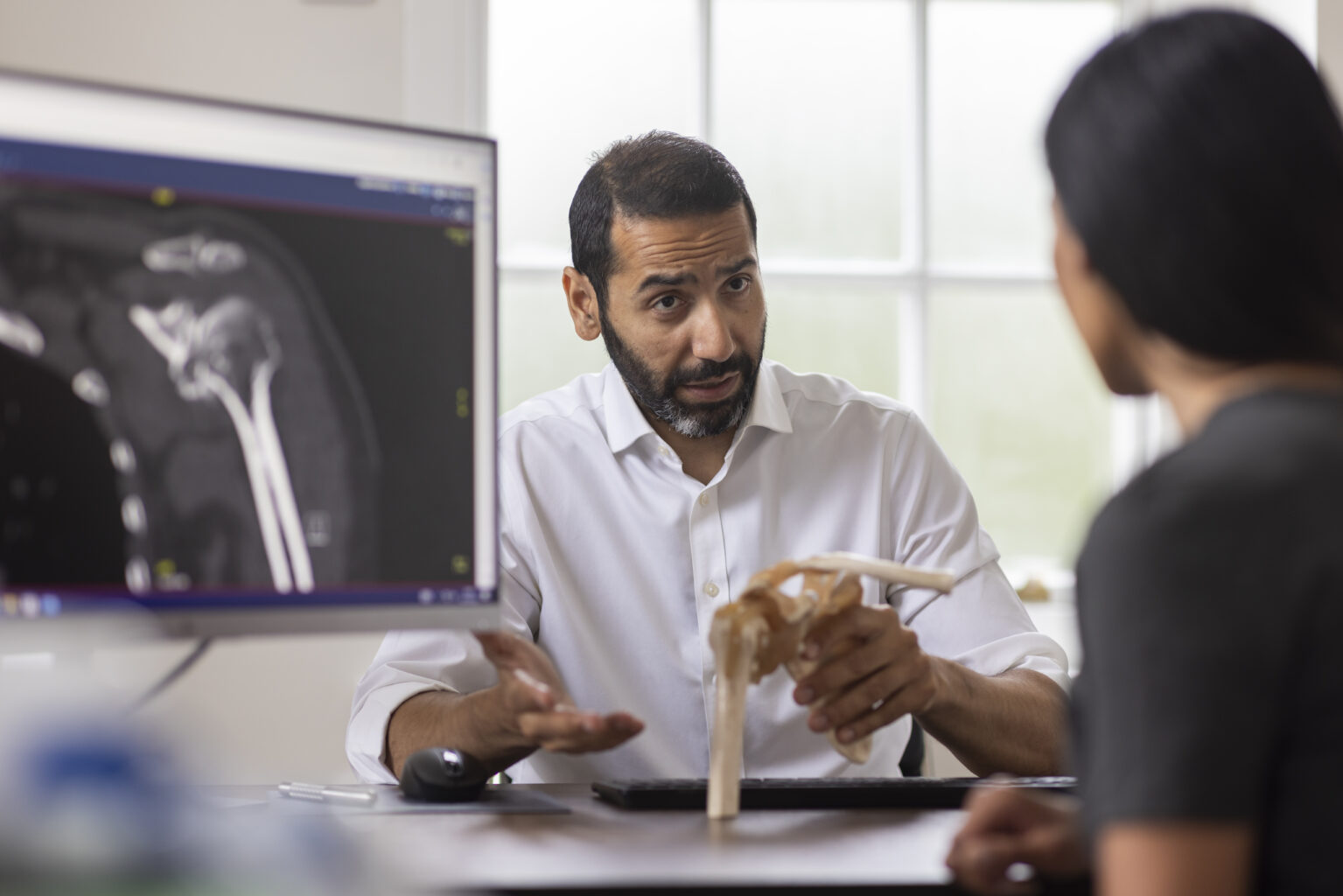Contact number: 020 7806 4060
What is AC & SC Joint Repair?
The AC joint, located at the top of the shoulder, and the SC joint, where the collarbone meets the chest, can become damaged due to trauma, instability, or arthritis. Joint repair surgery involves stabilising or reconstructing the joint to improve function and relieve discomfort.
Common reasons for AC & SC joint repair include:
- AC Joint Dislocation: Caused by falls or trauma to the shoulder.
- SC Joint Instability: Joint instability leading to pain or restricted movement.
- Arthritis: Degeneration of the joint causing persistent pain and stiffness.
Surgery may involve reconstructing ligaments, repairing soft tissue damage, or, in some cases, removing damaged joint surfaces to restore stability and function.
AC & SC Joint Repair at St John & St Elizabeth Hospital
At St John & St Elizabeth Hospital, we understand how joint injuries can impact your daily life. Our orthopaedic specialists provide tailored treatment plans and expert care to help you recover movement and return to the activities you enjoy.
Why choose us for AC & SC joint repair?
- Specialist Orthopaedic Surgeons: Our experienced consultants are experts in treating shoulder joint injuries and instability.
- Personalised Care: We develop tailored treatment plans for AC and SC joint repair, focusing on your specific injury and recovery goals to help restore stability and movement.
- Modern Facilities: Our hospital is equipped with advanced imaging and surgical technology, ensuring accurate diagnosis and precise repair of shoulder joint injuries.
- Accessible Location: Based in NW8, we serve patients from Hampstead (NW3), Kilburn (NW6), and across London.
We are dedicated to providing the highest standard of care to help you move forward with confidence.
Consultants
How to pay for your treatment
If you’re… paying for yourself
Did you know you don’t need private medical insurance to come to St John & St Elizabeth Hospital? As a self-pay patient, you can access safe, outstanding quality health care at times to suit you.
For scans and tests, as well as to see most consultants, you’ll still need to be referred by a medical professional like your GP, but as a self-pay patient, the process is more straightforward. You won’t need authorisation from an insurance provider, and you’ll have greater choice of consultant and appointment times.
If you’re… insured
St John & St Elizabeth Hospital is approved by all major medical insurance companies. If you have a personal private health insurance policy, or your company provide it for you, you can use it to pay for your care from your initial consultation through to treatment, surgery and aftercare such as physiotherapy. Not all private health insurance plans cover the same things. It’s very important to check exactly what you are covered for with your insurance provider.
Frequently Asked Questions About AC & SC Joint Repair
St John & St Elizabeth Hospital is located in St John’s Wood (NW8), a well-connected area of North West London. We are conveniently accessible for patients from Hampstead (NW3), Kilburn (NW6), and beyond.
By Tube:
- St John’s Wood station (Jubilee Line) is just a 5-minute walk from the hospital.
- Finchley Road (NW3) and Kilburn stations (NW6) on the Jubilee Line provide excellent connections.
By Bus:
- Wellington Road: Routes 13, 46, 82, and 113 stop near St John’s Wood Underground Station, just a short walk from the hospital.
- Circus Road: Routes 46 and 187 stop close to the hospital’s Circus Road entrance.
- Abbey Road: Routes 139 and 189 stop near the junction where Grove End Road becomes Abbey Road, providing easy access.
Major Roads:
If you’re travelling from NW3 or NW6, major routes such as Finchley Road or Kilburn High Road offer a direct approach to the hospital.
SC (sternoclavicular) joint surgery can benefit patients experiencing persistent pain, instability, or limited movement that hasn’t improved with non-surgical treatments. By stabilising or repairing the joint, the surgery helps restore function and improve overall quality of life.
AC (acromioclavicular) joint surgery is often worthwhile for patients with ongoing pain or instability caused by injuries, such as dislocations or arthritis. The procedure can significantly reduce discomfort, restore shoulder stability, and allow a return to normal activities.
The procedure typically takes 1 to 2 hours, depending on the severity of the joint damage and the surgical approach used.
Recovery involves a period of rest, followed by physiotherapy to restore strength and mobility. Most patients can return to light activities within 6 weeks, with full recovery taking 6 to 12 months, depending on the extent of the repair.
There are things that patients can do to help speed up the process, these include:
- Wearing a sling:
An arm sling should be used for the first four to six weeks. This will help keep the wound dry and keep your arm stationary.
- Physiotherapy:
Having an upper limb physiotherapist to help you practice motion exercises, gain strength back in your shoulder joint, and to ensure that the joints are no longer completely torn can help encourage recovery quicker.
- Posture:
When recovery from a SC or AC separation, little things like posture can help your body and shoulder blade to position in a way to avoid injury. Before you start an activity, be mindful of moving your shoulder blade down and in towards the spine – as opposed to a back braced position.
The procedure is performed under anaesthesia, so you won’t feel pain during surgery. Some soreness and stiffness are normal during recovery, but this can be managed with pain relief medication and physiotherapy.
Surgery is recommended when joint damage, instability, or arthritis causes significant pain, limits movement, or does not respond to non-surgical treatments such as rest, physiotherapy, or pain relief injections.
Medically reviewed by Mr Abbas Rashid - BSc(Hons) MBBS FRCS(Tr&Orth) on 02/02/2024


